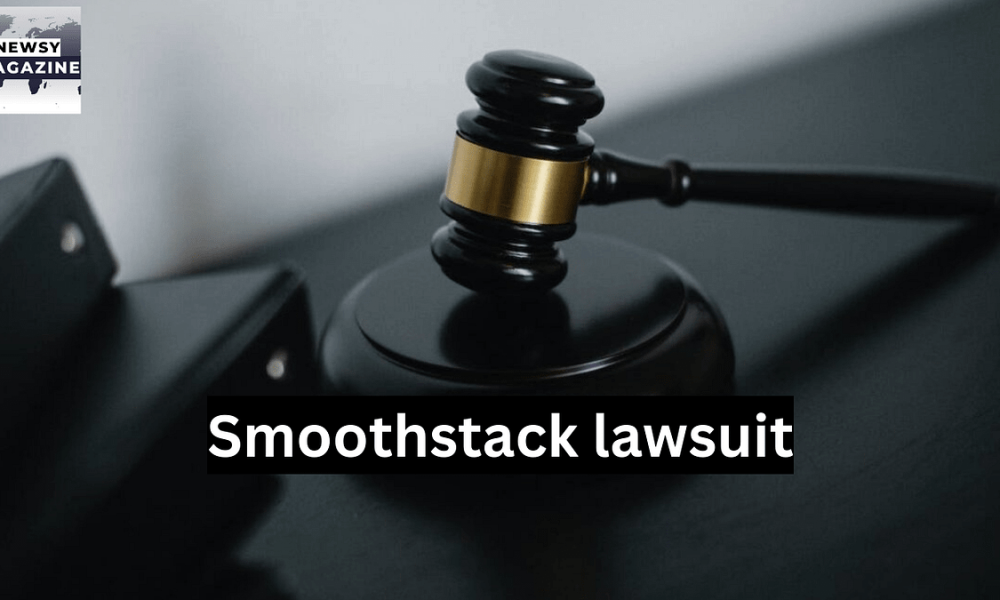Smoothstack Lawsuit, a prominent IT staffing and training player, has recently been at the centre of a significant legal dispute. This lawsuit has drawn considerable attention due to its potential ramifications for the company and the broader industry. In this article, we delve into the details of the Smoothstack lawsuit, exploring its origins, critical legal issues, and the wider impact on the company and its stakeholders.
Background of Smoothstack
Smoothstack Lawsuit was founded to revolutionize IT staffing by offering specialized training programs and job placement services. Over the years, the company has experienced impressive growth, expanding its operations and securing a diverse client base. Its innovative approach to training and staffing has positioned it as a leader in the field, attracting clients and job seekers looking for tailored solutions.
Essential Services and Business Operations
Smoothstack Lawsuit core services include IT training programs, recruitment solutions, and workforce management. The company’s training programs equip individuals with the necessary skills to excel in the tech industry. Additionally, Smoothstack offers customized recruitment solutions to help businesses find the right talent. These services have been integral to its success and have helped establish its reputation as a critical player in the staffing sector.
Smoothstack Lawsuit Major Clients and Partnerships
Smoothstack Lawsuit has built strong relationships with significant clients, including leading technology firms and large corporations. These partnerships have been crucial to its growth and contributed to its industry reputation. The company’s ability to deliver high-quality services has led to long-term contracts and repeat business, further cementing its position in the market.
The Lawsuit: An Overview
The Smoothstack lawsuit came to light in early 2024 when a former employee filed a complaint against the company. The lawsuit alleges a series of grievances related to employment practices and contractual obligations. This legal battle has since evolved into a high-profile case, drawing attention from both legal professionals and industry observers.
Parties Involved in the Lawsuit
The lawsuit involves Smoothstack as the defendant and a former employee as the plaintiff. The plaintiff, whose identity has been partially disclosed, has raised several issues concerning their employment experience with the company. Smoothstack, on the other hand, has vigorously defended its practices and policies, asserting that the claims are unfounded.
Allegations and Claims Made Against Smoothstack
The primary allegations against Smoothstack include breach of contract, unfair labour practices, and employment law violations. The plaintiff claims that Smoothstack failed to adhere to agreed-upon terms, which has resulted in financial and personal losses. These claims form the crux of the legal dispute and are central to the ongoing litigation.
Critical Legal Issues in the Case
One of the central issues in the Smoothstack lawsuit is the alleged breach of contract. The plaintiff contends that Smoothstack did not honour the terms outlined in their employment agreement. This includes claims of unpaid wages, failure to provide promised benefits, and other contractual discrepancies. The court is closely examining these allegations to determine their validity.
Employment Practices and Labor Law Concerns
Another significant aspect of the lawsuit is employment practices and compliance with labour laws. The plaintiff alleges that Smoothstack engaged in practices inconsistent with employment regulations. This includes claims of unfair treatment, discriminatory practices, and violations of workers’ rights. These issues are crucial as they impact the plaintiff and the company’s broader workforce.
Intellectual Property Disputes
While not the primary focus, the lawsuit also includes elements of intellectual property disputes. The plaintiff has raised concerns about the use of proprietary information and potential misuse of intellectual property. This aspect of the case adds complexity and could have implications for Smoothstack’s operations and competitive position.
Regulatory and Compliance Issues
Regulatory and compliance issues are also at the forefront of the lawsuit. Smoothstack is accused of failing to comply with industry regulations and standards. This includes allegations of inadequate reporting, non-compliance with labour laws, and failure to adhere to industry best practices. These issues are being scrutinized to assess their impact on the company and its legal standing.
The Plaintiff’s Perspective
The plaintiff in the Smoothstack lawsuit is a former employee who has been vocal about their grievances. Their profile reveals a background in the IT industry, with a history of employment in similar roles. This experience provides context to their claims and highlights the nature of their allegations against Smoothstack.
Claims and Grievances Presented
The plaintiff’s claims primarily revolve around issues of contract breach and unfair employment practices. They assert that Smoothstack failed to fulfil its contractual obligations, leading to significant personal and financial distress. These grievances form the lawsuit’s basis and are central to the legal arguments presented.
Evidence and Arguments Supporting the Lawsuit
The plaintiff has presented evidence, including employment records, correspondence, and witness testimonies, to support their claims. This evidence aims to substantiate their allegations and demonstrate that Smoothstack’s practices were inconsistent with contractual and legal obligations. The plaintiff’s arguments are being carefully evaluated as part of the legal proceedings.
Smoothstack’s Defense
Smoothstack has issued a formal statement denying the allegations in response to the lawsuit. The company asserts that it has adhered to all contractual and legal obligations and that the claims are without merit. Smoothstack’s defence strategy includes refuting the plaintiff’s allegations and presenting evidence to counter the claims against it.
Legal Strategies and Arguments Presented by Smoothstack
Smoothstack’s legal team has employed various strategies to defend the company. This includes challenging the validity of the plaintiff’s claims, questioning the evidence presented, and providing alternative explanations for the issues raised. The defence aims to demonstrate that the company’s practices align with industry standards and legal requirements.
Counterclaims and Rebuttals
In addition to defending against the initial claims, Smoothstack has also filed counterclaims. These counterclaims address issues such as potential misconduct by the plaintiff and challenges to the credibility of their evidence. The rebuttals are designed to strengthen Smoothstack’s position and mitigate the impact of the plaintiff’s allegations.
Impact on Smoothstack’s Operations
The lawsuit has had significant financial implications for Smoothstack. The company has incurred legal costs associated with defending itself, and there is potential for monetary damages if the case is not resolved. Additionally, the lawsuit’s uncertainty could impact investor confidence and business operations.
Effects on Company Reputation and Client Relationships
Smoothstack’sThe lawsuit has affected Smoothstack’s reputation, potentially affecting client relationships. The negative publicity surrounding the case may influence current and prospective clients’ perceptions of the company. Maintaining client trust and managing public relations are crucial for Smoothstack during this period.
Operational Changes and Adjustments
In response to the lawsuit, Smoothstack may need to make operational adjustments. These could include revising employment practices, improving compliance measures, and addressing any identified issues. These changes aim to mitigate future legal risks and ensure that the company’s practices align with industry standards.
Legal Proceedings and Timeline
The lawsuit has progressed through several key milestones, including initial filings, court hearings, and procedural motions. These milestones mark significant points in the legal process and provide insight into the case’s development. Tracking the timeline helps to understand the case’s current status and future trajectory.
Major Court Hearings and Decisions
Major court hearings have played a critical role in shaping the lawsuit’s outcome. These hearings involve presentations of evidence, legal arguments, and judicial decisions. Each hearing impacts the case’s progression and influences the plaintiff and Smoothstack’s strategies.
Current Status of the Case
As of the latest updates, the case is ongoing, with ongoing hearings and legal proceedings. The current status reflects the progress made in the lawsuit and indicates the potential outcomes. Monitoring the case’s status is essential for understanding its trajectory and possible resolution.
Analysis of Similar Cases
Comparing the Smoothstack lawsuit with other high-profile cases in the IT and staffing industries provides valuable context. Similar lawsuits can offer insights into potential outcomes and industry trends. Analyzing these comparisons helps to identify patterns and possible implications for Smoothstack.
Lessons Learned from Similar Legal Battles
Lessons from similar legal battles can inform the plaintiff and Smoothstack’s strategies. Understanding how other companies have navigated similar situations can guide potential resolutions and best practices. These lessons are crucial for managing legal risks and addressing industry challenges.
Implications for the Tech and Staffing Sectors
The implications of the Smoothstack lawsuit extend beyond the company itself. The case may influence industry practices, regulatory standards, and employment policies. Understanding these implications helps to assess the broader impact on the tech and staffing sectors and prepares companies for potential challenges.
Expert Opinions and Commentary
Legal experts and analysts provide valuable insights into the Smoothstack lawsuit. Their perspectives on the legal issues, defence strategies, and potential outcomes help to clarify the case’s complexities. Expert opinions offer a deeper understanding of the legal landscape and inform the case’s resolution predictions.
Opinions from Industry Insiders
Industry insiders offer perspectives on how the lawsuit may affect the tech and staffing sectors. Their opinions on Smoothstack’s practices, industry trends, and potential repercussions provide context for the case. Understanding these viewpoints helps to gauge the broader impact of the lawsuit.
Media Coverage and Public Perception
Media coverage has significantly shaped public perception of the Smoothstack lawsuit. Analyzing media reports and public reactions provides insight into how the case is perceived and its impact on Smoothstack’s reputation. Public perception can influence client relationships and business operations.
Read More: Payday Loans Eloanwarehouse










